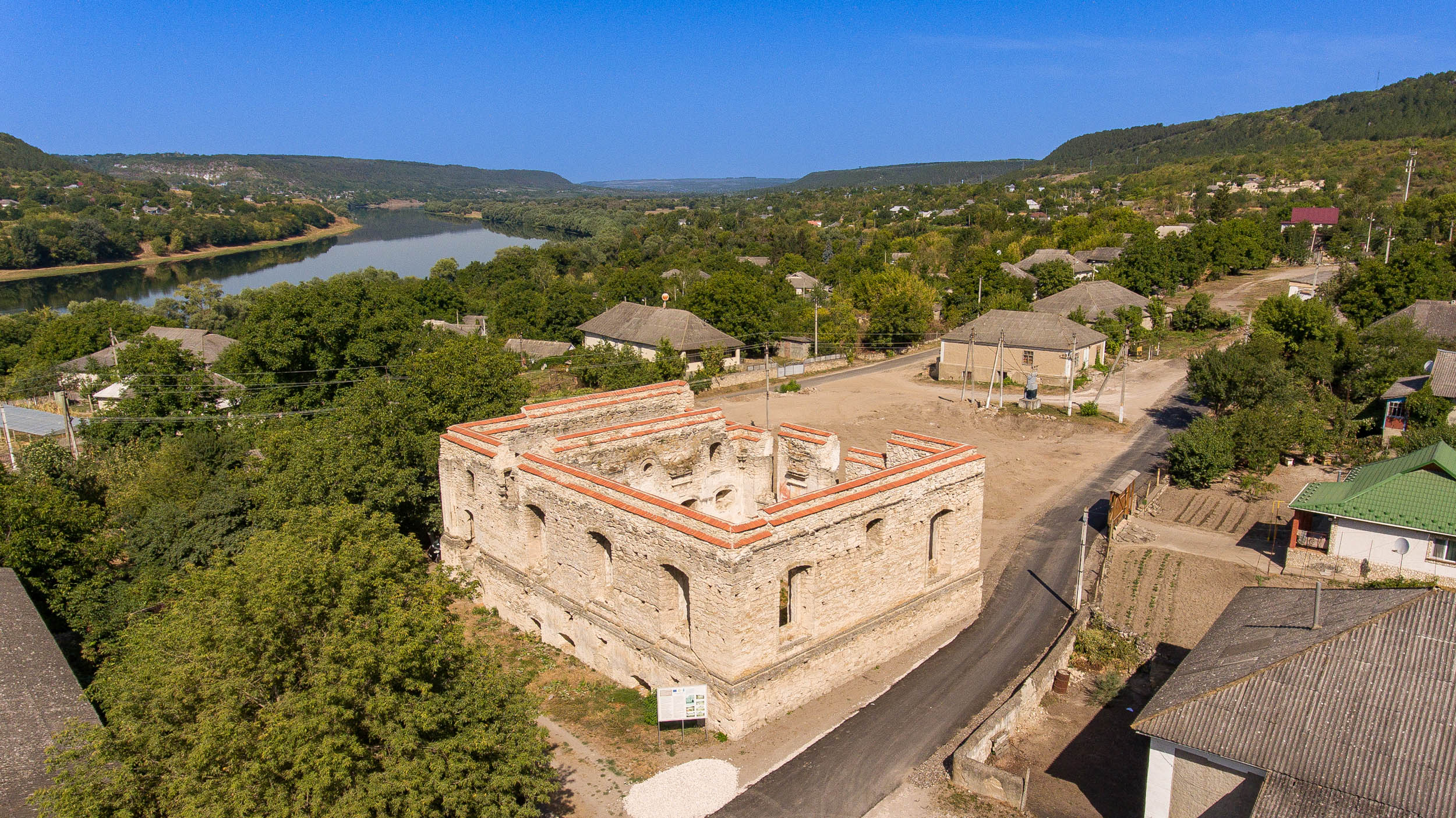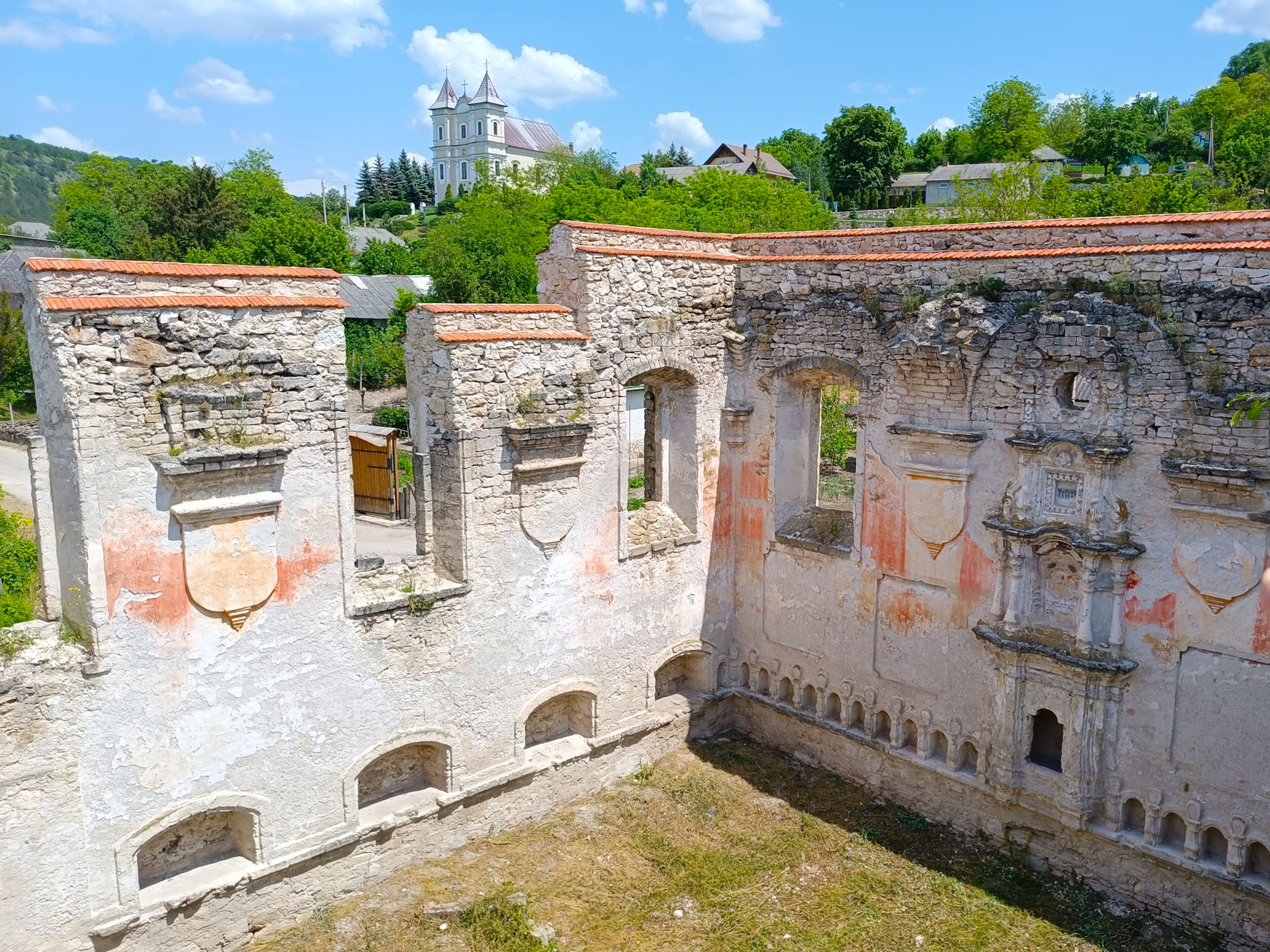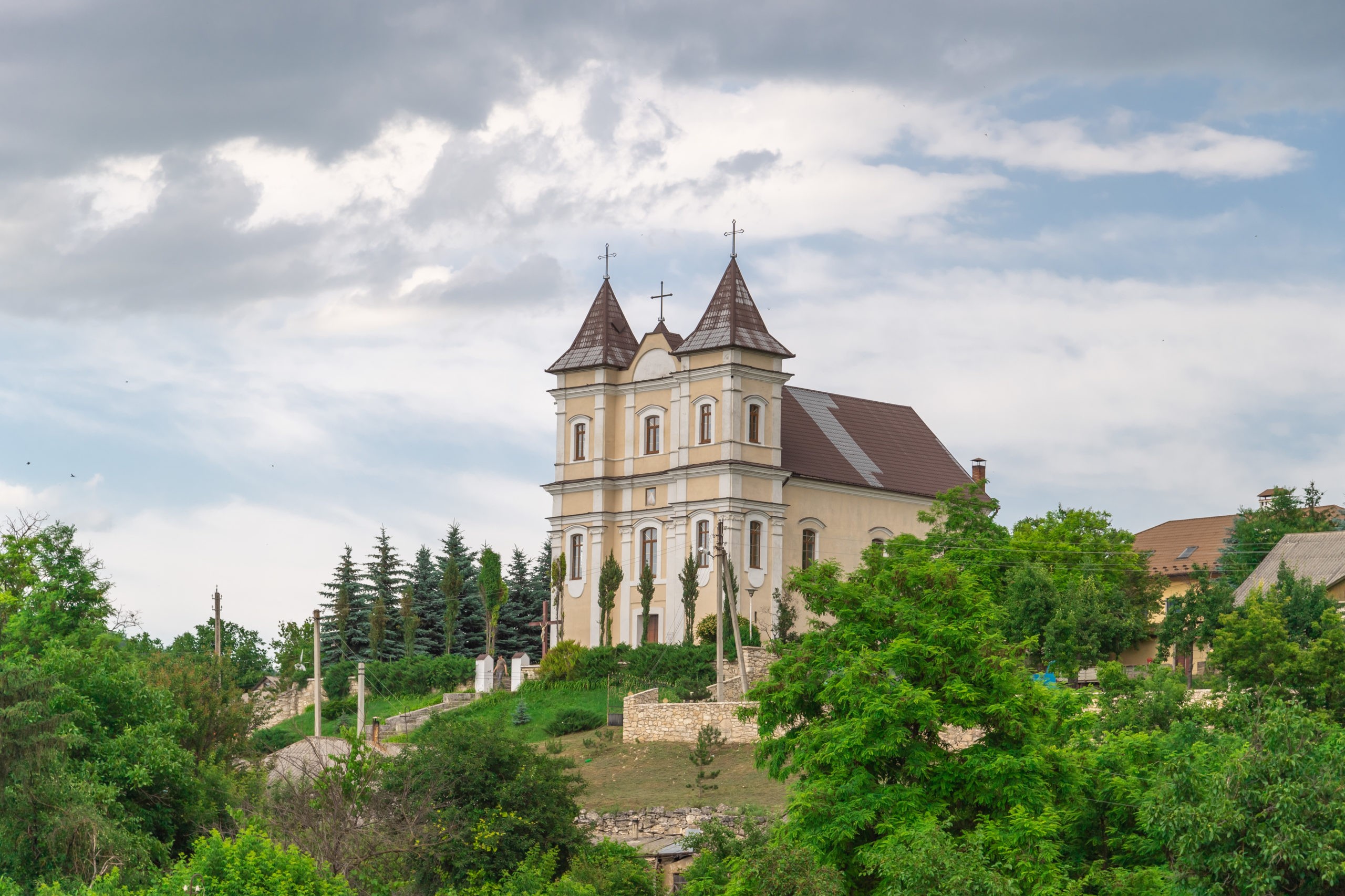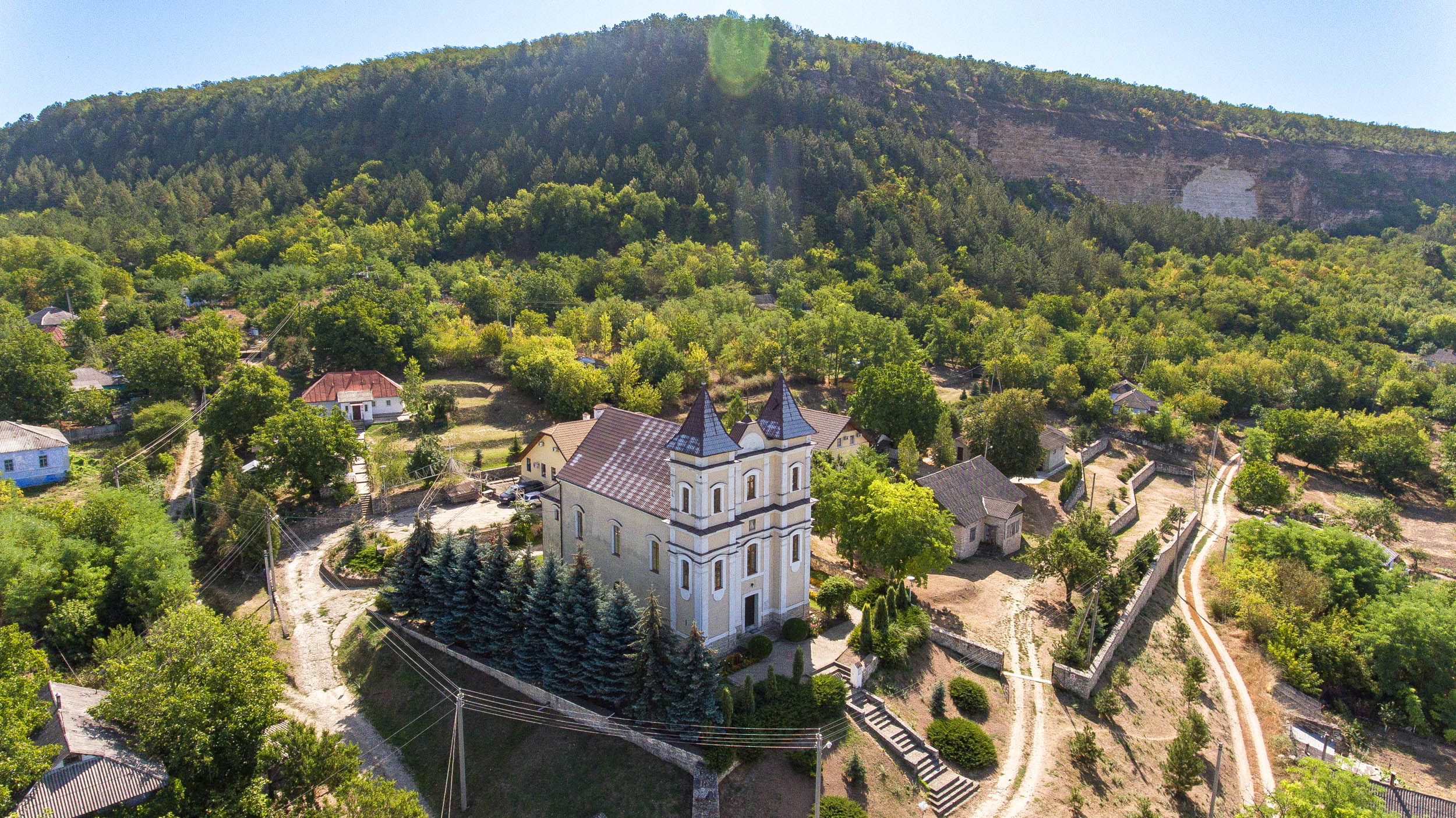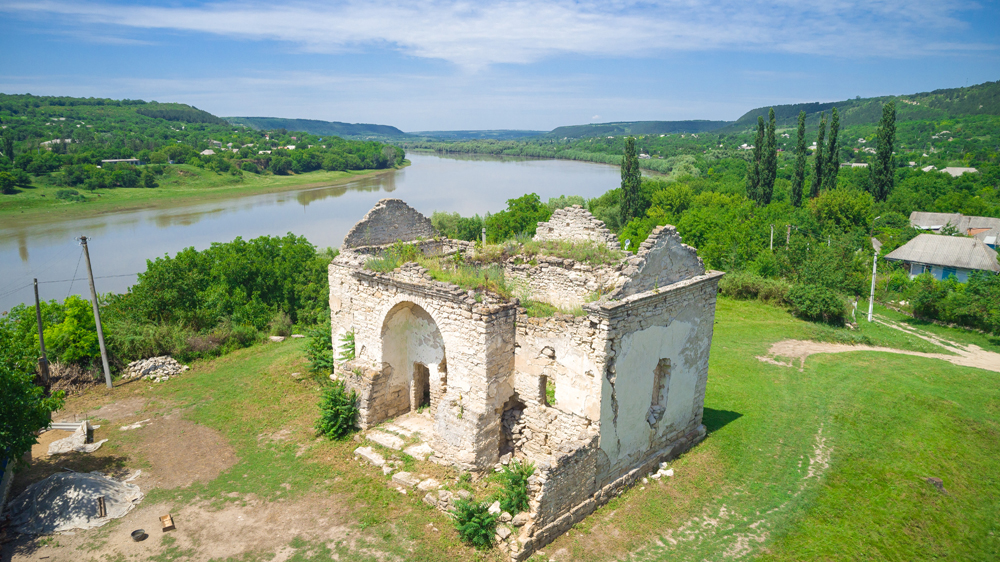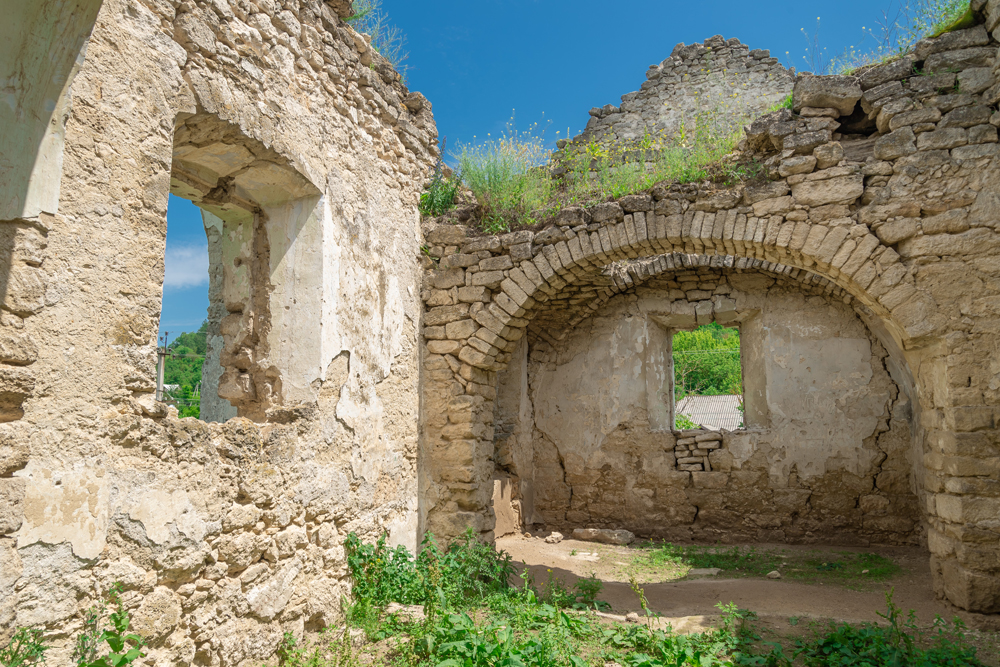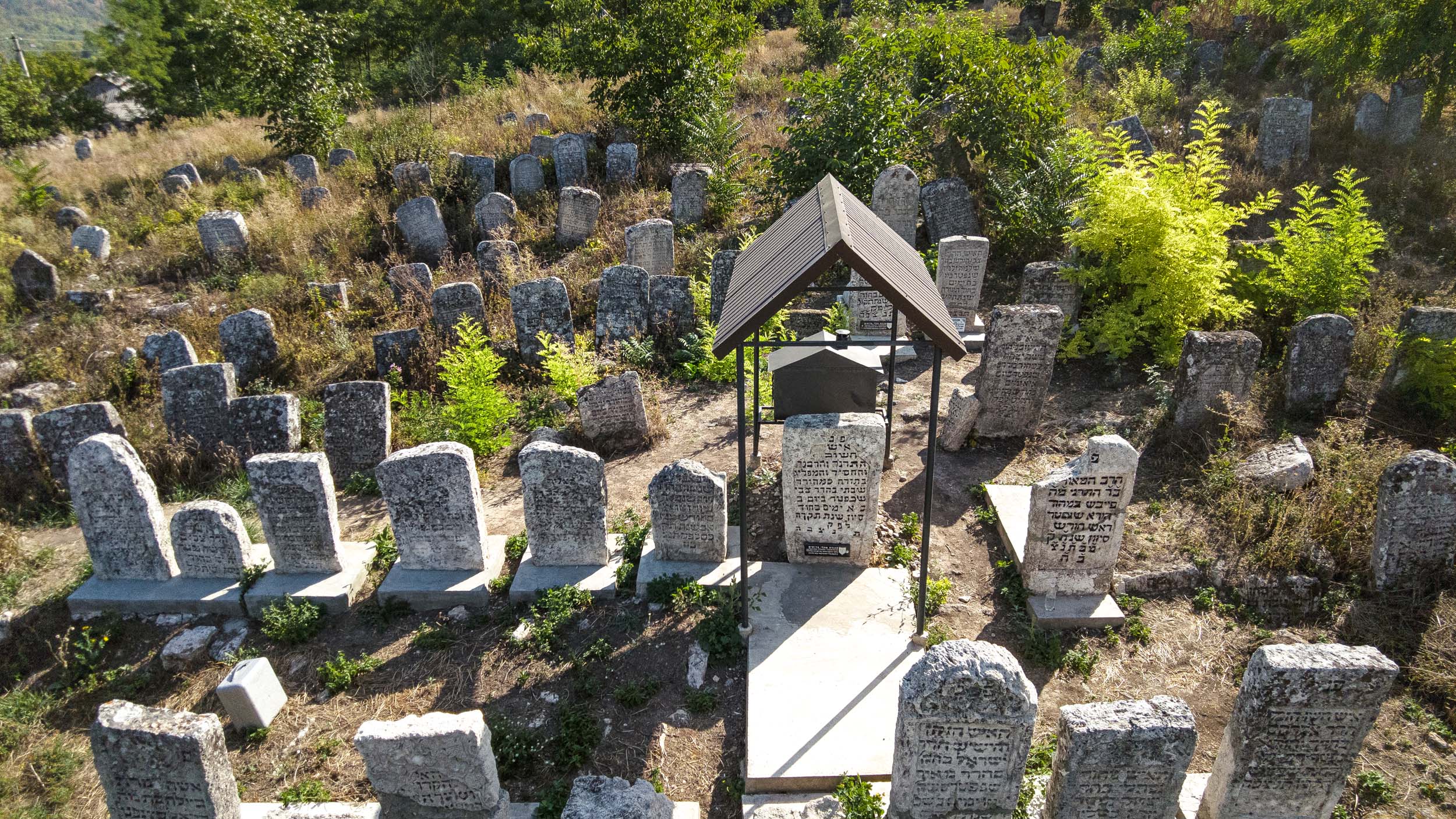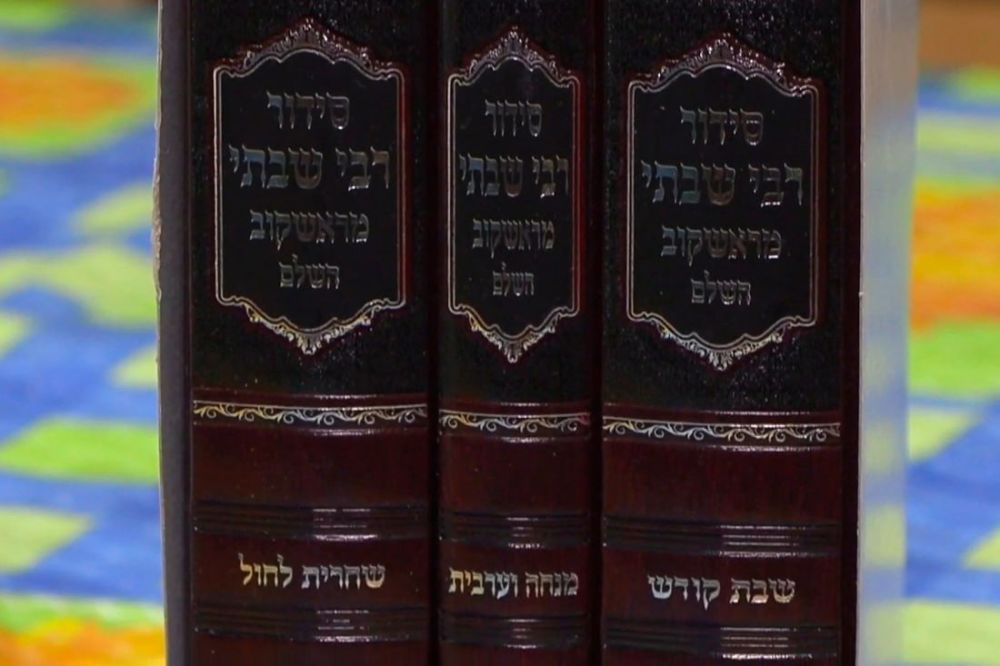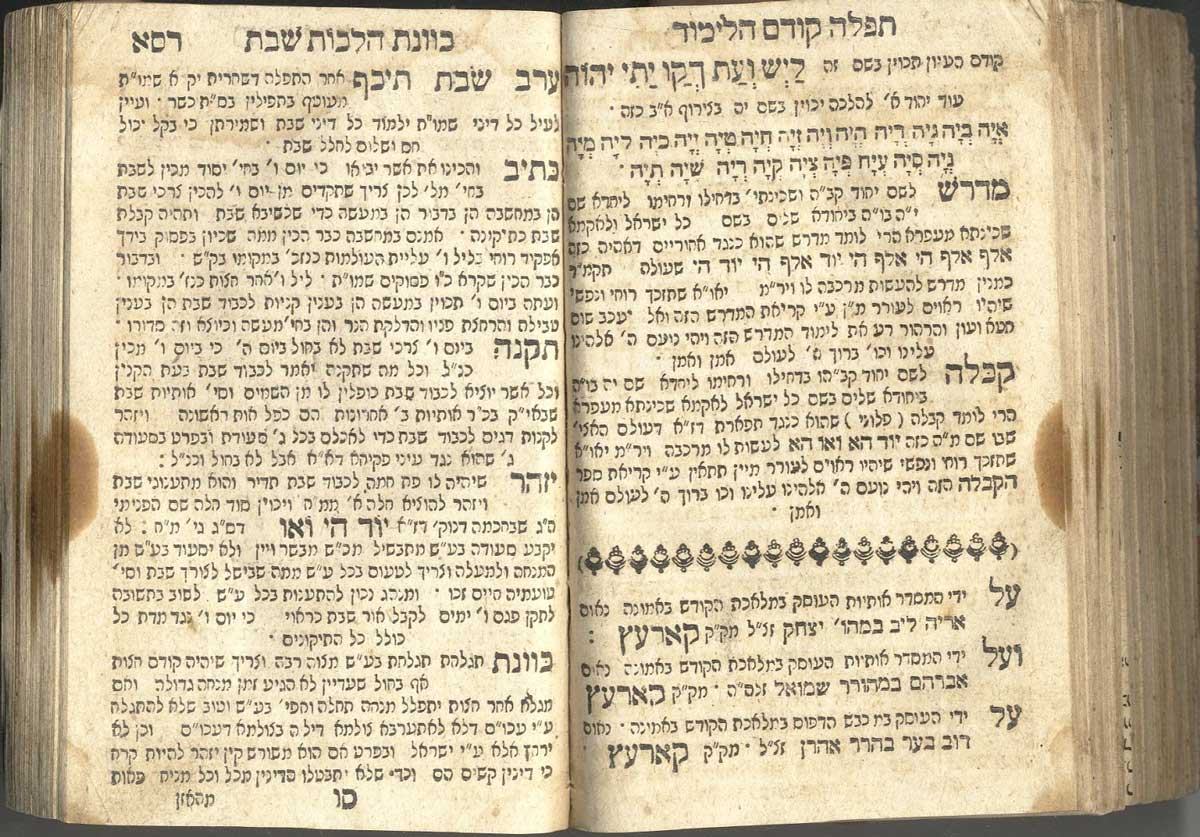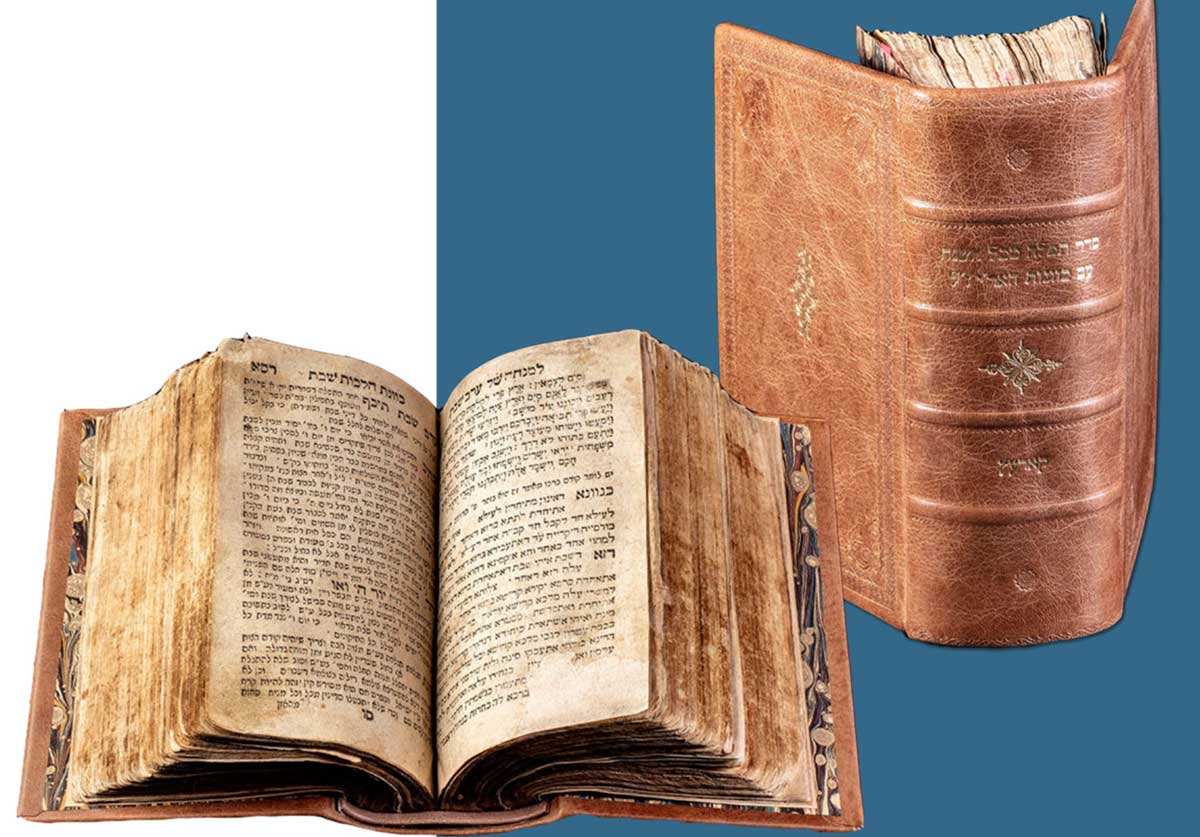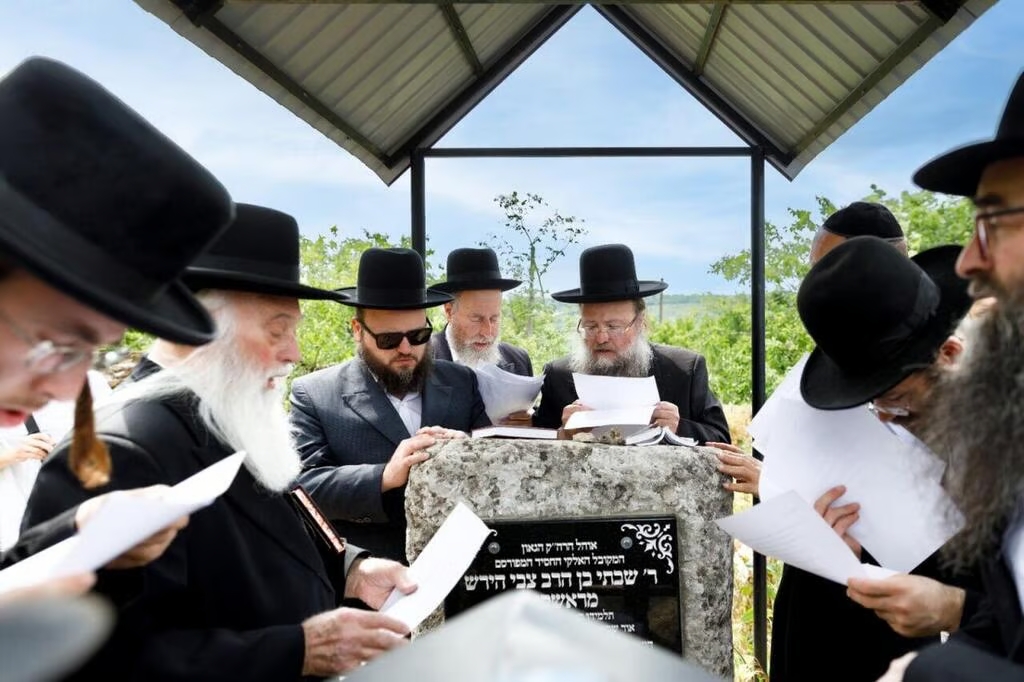Religious movements in Rashkov
For many centuries, Rashkov is a place where at least three religions live together in peace and harmony. There is no historical information about pogroms or other national or religious conflicts.
On the territory of the village of Rashkov there are:
- Jewish synagogue and the grave of the Righteous Rabbi Shabtai, ancient Jewish cemeteries and much more.
- Active Catholic Church and community.
- The ruins of an ancient Orthodox church, as well as a functioning church.
Everything suggests that for many centuries Rashkov has been and remains a place of attraction for different cultures and religions.
Ruins of the synagogue in Rashkov
Synagogue was built around 1749. At that time, the village was one of the centers of world Hasidism. For a long time, the synagogue served as the center of spiritual life for the large Jewish community of Rashkov. At the moment, stone walls and some elements of the internal structure have been preserved.
Catholic Church in Rashkiv
Church St. Cajetan is the oldest Catholic church on the territory of Pridnestrovie, preserved to this day almost in its original form. The decision to build the temple was made in 1749 by Prince Joseph Lubomirski. The building is a classic example of the architecture of Polish Catholic churches of the 18th century with Baroque elements.
Ruins of an ancient church in Rashkov
Church Svyato-Pokrovskaya was built in 1740. Initially it was Greek Catholic (Uniate), and then Orthodox. During the Soviet years, the temple, like many other religious buildings in the region, was destroyed. Today, only the walls and part of the roof have survived.
 Thanks to the support of the European Union Confidence Building Measures Program (implemented by UNDP), restoration and conservation work was carried out in the village of Rashkov on an 18th-century synagogue and church.
Thanks to the support of the European Union Confidence Building Measures Program (implemented by UNDP), restoration and conservation work was carried out in the village of Rashkov on an 18th-century synagogue and church.
The renovation work took several months and complied with national and international heritage conservation standards.
Jewish cemetery in Rashkov
There has been a Jewish community on the territory of Rashkov since ancient times. Two Jewish cemeteries still remain. Rashkov was one of the centers of Hasidism - a mystical movement in Judaism, where the residence of the Hasidic rabbis of the Rashkov dynasty was located.
The grave of the Righteous Rabbi Shabtai is located in the cemetery.
The grave of the righteous Rabbi Shabtai from Rashkov
In Rashkov there were two powerful lines of Hasidism, the leaders of which went directly back to the Baal Shem Tov. One of his closest associates and student Rabbi Shabtai, who founded the Rashkov dynasty at the beginning of the 18th century. Rabbi Shabtai ben Tzvi-Hirsh (approximate years of life 1655-1745), one of the outstanding students of the founder of Hasidism Baal Shem Tov, is the author of the famous prayer book according to the instructions of one of the greatest Kabbalists in the history of the Arizal - Rabbi Isaac Luria. Rabbi Shabtai's prayer book was and is still used by major rabbis around the world.
The dynasty was continued by his son Rabbi Yosef, then the grandson of Rabbi Shlomo Zalmin. In total, it existed for almost two and a half centuries until the Second World War.
Rabbi Shabtai established the custom, accepted in many communities around the world, of reading the 27th Psalm of David daily in the month of repentance Elul before Rosh Hashanah.
The founder of the other line is Rabbi Yaakov Yosef Hakohen, the scion of a noble Jewish family, a descendant of prominent rabbis and kabbalists. Since childhood, Rabbi Yaakov Yosef showed exceptional abilities both in the study of the Talmud and in deep Kabbalistic research. Being at first an opponent of Hasidism, he eventually became one of the favorite students and followers of the Baal Shem Tov. Rabbi Yaakov Yosef became the author of the first Hasidic book, Toldot Yaakov Yosef, and the founder of Hasidic literature in general. The works of Rabbi Yaakov Yosef are recognized as the most authoritative and reliable source on Hasidism and are actively used today.
